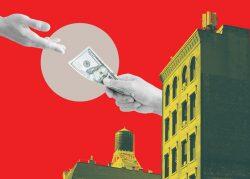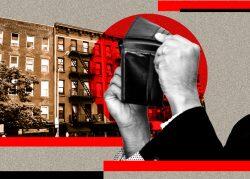 Rent board approves first full-year, post-Covid hike: 3.25%
Rent board approves first full-year, post-Covid hike: 3.25%
Trending
Inflation crushing rent-stabilized landlords: report
CHIP analysis finds 3.25% rent hike covers less than half of cost increases

October could have offered some reprieve for cash-strapped owners of rent-stabilized buildings.
Instead, a report finds, they will continue to lose ground, despite the annual rent increase they can charge in leases signed after Oct. 1.
The report was produced by a landlord group that advocated for a larger rent hike, but using data compiled by the Rent Guidelines Board staff, which is independent of the industry.
In June, the board approved the first full-year rent hikes on stabilized apartments since the pandemic began: 3.25 percent on one-year leases and 5 percent on two-year leases.
Before the vote, owners decried the proposed increases, arguing that even the 4.5 percent raise the board staff had recommended to keep pace with expenses wouldn’t cut it, especially with inflation getting worse.
Now, the analysis by the Community Housing Improvement Program finds that for many rent-stabilized owners, 3.25 percent pencils out to a pittance.
The city’s pre-1974 properties with at least 80 percent of units rent-regulated will see operating costs increase by more than double that amount, according to the landlord group’s report. Those buildings make up nearly 80 percent of all housing outside of core Manhattan.
Inflation is the primary culprit. When the rent board recommended the 4.5 percent rent bump, it accounted for a consumer price index that had risen 4 percent between March 2021 and February 2022.
But inflation has since nearly doubled to 7.7 percent, the report reads.
CHIP calculates that an 8 percent rent bump would have been needed for owners of heavily rent-stabilized properties to keep pace with operating costs, which it estimates have risen by $939 per apartment annually. They include insurance, utilities, administrative costs and maintenance.
Read more
 Rent board approves first full-year, post-Covid hike: 3.25%
Rent board approves first full-year, post-Covid hike: 3.25%
 Landlords buy TV time to sway New Yorkers, rent board
Landlords buy TV time to sway New Yorkers, rent board
 Landlords’ profits drop nearly 8%, most in 17 years: rent board
Landlords’ profits drop nearly 8%, most in 17 years: rent board
Multifamily buildings are attractive to many investors because their rents can be raised to account for inflation. But for rent-stabilized units, increases are limited by the Rent Guidelines Board.
The market-rate units in heavily rent-stabilized buildings are not bound by those limits, but their rents typically cannot be raised enough to make much difference, according to CHIP. The buildings’ economics don’t allow for the kind of upgrades and amenities necessary for their free-market units to command pricey rents.
As evidence, the group points to a rent board memo from April that shows the average rent per month in older buildings outside of core Manhattan that are 100 percent rent-stabilized is only $5 to $15 less than those that are 80 percent rent-stabilized.
Factoring in higher financing costs since the Fed hiked interest rates this year — which are also excluded from the board’s older data — CHIP pegs net operating income for heavily-stabilized buildings at around $443 per unit.
But that doesn’t include energy costs, which the Rent Guidelines Board has also low-balled, the report claims. In last year’s report on operating costs, the board projected that fuel prices would grow by 0.1 percent. They rose by 19.6 percent.
This year, the board estimated costs would dip 1.7 percent between April 2022 and March 2023. Con Ed recently said it expects natural gas prices to spike by more than 20 percent in the coming months.
CHIP estimates the “massive underestimation” of gas expenses, which account for about 7 percent of stabilized owners’ overall costs, will be $150 annually per unit.
In all, those expenses will leave owners with a yearly income of $293 per unit, which the report claims is not enough to fund major repairs. For example, a boiler replacement runs about $172,600, according to Homes and Community Renewal, the state agency that oversees rent stabilization.
Using a 50-unit building as an average property, CHIP’s report estimates owners would net about $20,000 per year if no major work were done.
“This means it would take nine years for the building to build up enough reserves to afford a boiler replacement,” the report reads. And that’s just one of the capital expenditures owners face. CHIP estimates a “properly-run” 50-unit building spends about $100,000 on capital costs each year.
A separate rent increase is allowed if landlords make major capital improvements, but it was severely limited by the state’s 2019 rent law.
The report’s bottom line: The Rent Guidelines Board’s rent hikes have been so low that buildings without enough market-rate units to buoy income are “operating at or near a loss.”
“To be blunt, the RGB has defunded the majority of rent-stabilized buildings in New York City,” Jay Martin, the group’s executive director, said in a statement.
The group is asking legislators to cut housing providers’ costs. Its suggestions include reforming property taxes, limiting insurance premium increases, expanding the voucher system and dialing back rent regulations.
CHIP previously asked Albany to allow owners to reset rents of units that become vacant so they can afford repairs and offset rising costs.
“Elected officials have the power to reduce costs for renters and their housing providers,” said Martin, adding that instead, lawmakers have placed that burden on the rent board.
“It is time for them to take responsibility for the mess they have created and fix it,” he said.




